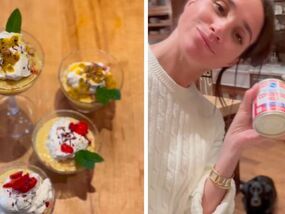Meghan Markle
Meghan Markle fans deliver two word verdict on new recipe inspired by Princess Lilibet


Meghan Markle fans share their opinion on the creamy family dessert recipe created by the Duchess of Sussex in new video post.


Meghan Markle fans share their opinion on the creamy family dessert recipe created by the Duchess of Sussex in new video post.